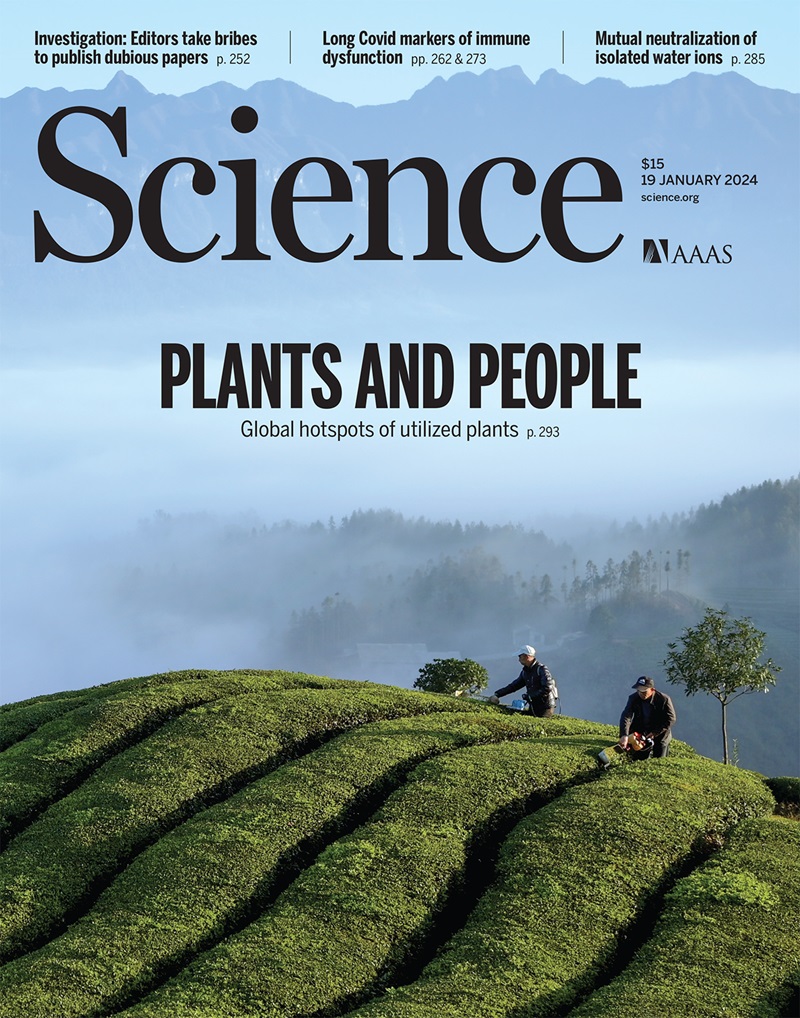Emergence and interstate spread of highly pathogenic avian influenza A(H5N1) in dairy cattle in the United States
IF 44.7
1区 综合性期刊
Q1 MULTIDISCIPLINARY SCIENCES
引用次数: 0
Abstract
Highly pathogenic avian influenza (HPAI) viruses cross species barriers and have the potential to cause pandemics. In North America, HPAI A(H5N1) viruses related to the goose/Guangdong 2.3.4.4b hemagglutinin phylogenetic clade have infected wild birds, poultry, and mammals. Our genomic analysis and epidemiological investigation showed that a reassortment event in wild bird populations preceded a single wild bird–to-cattle transmission episode. The movement of asymptomatic or presymptomatic cattle has likely played a role in the spread of HPAI within the United States dairy herd. Some molecular markers that may lead to changes in transmission efficiency and phenotype were detected at low frequencies. Continued transmission of H5N1 HPAI within dairy cattle increases the risk for infection and subsequent spread of the virus to human populations.

高致病性甲型H5N1禽流感在美国奶牛中的出现和州际传播
高致病性禽流感(HPAI)病毒跨越物种障碍,有可能造成大流行。在北美,与鹅/广东 2.3.4.4b 血凝素系统发育支系相关的甲型 H5N1 高致病性禽流感病毒感染了野鸟、家禽和哺乳动物。我们的基因组分析和流行病学调查显示,在一次野鸟对牛的传播事件之前,野鸟种群中发生了一次重配事件。无症状或症状不明显的牛的移动很可能是高致病性禽流感在美国奶牛群中传播的原因之一。一些可能导致传播效率和表型变化的分子标记被低频检测到。H5N1 高致病性禽流感在奶牛中的持续传播增加了病毒感染和随后向人类传播的风险。
本文章由计算机程序翻译,如有差异,请以英文原文为准。
求助全文
约1分钟内获得全文
求助全文
来源期刊

Science
综合性期刊-综合性期刊
CiteScore
61.10
自引率
0.90%
发文量
0
审稿时长
2.1 months
期刊介绍:
Science is a leading outlet for scientific news, commentary, and cutting-edge research. Through its print and online incarnations, Science reaches an estimated worldwide readership of more than one million. Science’s authorship is global too, and its articles consistently rank among the world's most cited research.
Science serves as a forum for discussion of important issues related to the advancement of science by publishing material on which a consensus has been reached as well as including the presentation of minority or conflicting points of view. Accordingly, all articles published in Science—including editorials, news and comment, and book reviews—are signed and reflect the individual views of the authors and not official points of view adopted by AAAS or the institutions with which the authors are affiliated.
Science seeks to publish those papers that are most influential in their fields or across fields and that will significantly advance scientific understanding. Selected papers should present novel and broadly important data, syntheses, or concepts. They should merit recognition by the wider scientific community and general public provided by publication in Science, beyond that provided by specialty journals. Science welcomes submissions from all fields of science and from any source. The editors are committed to the prompt evaluation and publication of submitted papers while upholding high standards that support reproducibility of published research. Science is published weekly; selected papers are published online ahead of print.
 求助内容:
求助内容: 应助结果提醒方式:
应助结果提醒方式:


